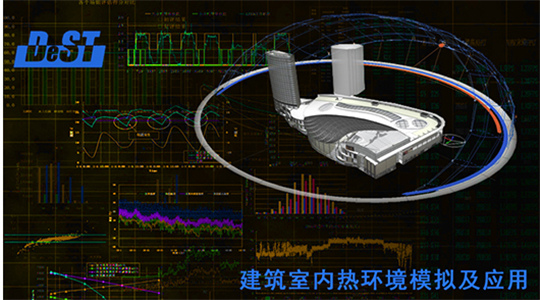
当前课程知识点:Computer-Aided Drug Design > Chapter one: The background of CADD > 1.3 CADD-Application of CADD in the School of Pharmacy > 1.3 CADD-Application of CADD in the School of Pharmacy
返回《Computer-Aided Drug Design》慕课在线视频课程列表
返回《Computer-Aided Drug Design》慕课在线视频列表
大家好
上节课我给同学们讲授了
关于CADD应用价值的相关知识
相信同学们一定对CADD
在新药研发中应用的技术
及成果都有所了解了
那么本节课
我将以暨南大学药学院为例
为同学们讲解
实际一线药物科研人员
是如何利用CADD
来助力我们的药物研发的
例如
本学院在开发DDR1&2双重抑制剂的过程中
便是利用CADD来通过同源建模
辅助药物相关研究设计
盘状蛋白域受体(DDRs)
是20世纪90年代初
发现的跨膜受体酪氨酸激酶(RTK)超家族成员
他可以分为两种类型
DDR1和DDR2
DDR1广泛表达于肺
肾
结肠和大脑的上皮细胞
而DDR2主要表达于肾
皮肤
肺
心脏和结缔组织的间充质细胞
包括成纤维细胞
肌成纤维细胞
平滑肌细胞和软骨细胞等
研究表明
DDR1和DDR2对细胞增殖
存活
分化
粘附
和基质重塑等基本过程的调控
都具有重要作用
该类受体的失调
与许多人类疾病密切相关
比如与肿瘤密切相关
因此
DDR1和DDR2
被认为是新的潜在的药物发现新靶标
小分子DDR抑制剂的开发
可能导致新的
和有吸引力的治疗策略
用于治疗癌症或各种炎症相关疾病
目前
已有多个DDR1
和DDR2抑制剂的报道
但是
这些分子
大多具有相对较差的靶标特异性
比如第一节课提到的神药
格列卫
也就是伊马替尼
就表现出较强的DDR1
和DDR2抑制活性
但其主要靶点
是BCR-ABL融合基因
DDR1和DDR2
都不是它们的主要靶点
故实验室前期发现的
新选择性DDR1抑制剂
7rh的基础上
尝试开发
DDR1&2双抑制剂
7rh是暨大药学院
新发现的选择性
DDR1抑制剂
它能够较强抑制DDR1激酶活性
同时也具有微弱的DDR2抑制作用
鉴于7rh
良好的靶向选择性
和药代动力学特性
我们将其
作为进一步结构修饰的起始先导化合物
以实现对DDR1和DDR2的
双重抑制
为了考察7rh对靶点的作用关系
我们可以在前人
解析的DDR1的晶体结构的基础上
利用CADD的方法来分析
它的对接情况
如图所示
该抑制剂被预测与DDR1的
4个氨基酸残基
形成4个氢键
在变构口袋中
也能形成良好的
范德华力作用
但由于DDR2的晶体结构尚无报道
我们经过序列比对发现
DDR2的激酶结构域
与DDR1有大约57%的序列同源性
这提示
我们可利用
CADD的另一个技术
同源模建
在DDR1晶体结构的基础上
生成了DDR2的同源模型
这为抑制剂优化
提供了初始结构基础
如图所示
通过分析
7rh
与模建的DDR2的对接情况后发现
7rh
未能与DDR2
相应的95位
甲硫氨酸形成氢键相互作用
进一步的研究表明
4位的吡唑并嘧啶头部
与94位酪氨酸
和95位甲硫氨酸残基之间
可能存在立体位阻
这可能是其
与DDR2的效价显著降低的原因之一
这些初步的计算分析表明
用铰链结合杂环
取代吡唑并嘧啶基
可能是一种可行的策略
实现对DDR1和DDR2的双重抑制
正是基于前期
CADD的分析结果
我们以7rh为先导物
设计合成了一系列化合物
通过相应的生物实验
得到了一个
DDR1&2
高选择性双重抑制剂5n
如下图所示
新化合物5n和DDR1的对接分析表明
分子内的
吡嗪基咪唑
与704位甲硫氨酸
在铰链区形成一个必需的氢键
其酰胺基
与672谷氨酸
以及784天冬氨酸之间
形成了两个额外的氢键
而flag异丙基
则很好地嵌入了由624位缬氨酸
653位丙氨酸
655位赖氨酸
和699位甲硫氨酸
形成的疏水性口袋
这也很好的解释了5n对DDR1的高抑制活性
由上面的具体实例
同学们应该
能更加深刻的感受到
CADD在药物研发中举足轻重的作用
在接下来的课程中
我们也将从理论和实操中
一一带领同学们学习
如何使用CADD这把药物创新的利剑
谢谢大家
-1.1 CADD-Where am I coming from?
--1.1 CADD-Where am I coming from?
-1.2 CADD-My Value
-1.3 CADD-Application of CADD in the School of Pharmacy
--1.3 CADD-Application of CADD in the School of Pharmacy
-1.4 CADD-Friendship with undergraduates
--1.4 CADD-Friendship with undergraduates
-Unit test 1
-2.1 The mystery of drug structure
--2.1 The mystery of drug structure
-2.2 Drug activity decryption-receptors and ligands
--2.2 Drug activity decryption-receptors and ligands
-2.3 The magical journey of drug discovery
--2.3 The magical journey of drug discovery
-Unit test 2
-3.1 Brief introduction of CADD's main methods
--3.1 Brief introduction of CADD's main methods
-3.2 QSAR
--3.2.1 The quantitative structure-activity relationship theory
--3.2.2 The quantitative structure-activity relationship methodology(1)
--3.2.3 The quantitative structure-activity relationship methodology(2)
--3.2.4 The quantitative structure-activity relationship methodology(3)
--3.2.5 The operation of quantitative structure-activity relationship (1)
--3.2.6 The operation of quantitative structure-activity relationship (2)
--3.2.7 The operation of quantitative structure-activity relationship (3)
-3.3 Molecular docking
--3.3.1 The molecular docking theory
--3.3.2 The molecular docking methodology
--3.3.3 The operation of molecular docking(1)
--3.3.4 The operation of molecular docking(2)
--3.3.5 The operation of molecular docking(3)
-3.4 Pharmacophore
--3.4.1 The pharmacophore theory
--3.4.2 The pharmacophore methodology
--3.4.3 The operation of pharmacophore(1)
--3.4.4 The operation of pharmacophore(2)
--3.4.5 The operation of pharmacophore(3)
--3.4.6 The operation of pharmacophore(4)
-3.5 Homology modeling
--3.5.1 The homology modeling theory
--3.5.2 The homology modeling methodology(1)
--3.5.3 The homology modeling methodology(2)
--3.5.4 The operation of homology modeling(1)
--3.5.5 The operation of homology modeling(2)
--3.5.6 The operation of homology modeling(3)
--3.5.7 The operation of homology modeling(4)
--3.5.8 The operation of homology modeling(5)
-Unit test 3
-4.1 Comprehensive case I
--4.1.1 Comprehensive case I-Homology modeling
--4.1.2 Comprehensive case I-Operation
-4.2 Comprehensive case II
--4.2.1 Comprehensive case II –QSAR
--4.2.2 Comprehensive case II -Operation
-4.3 Comprehensive case III
--4.3.1 Comprehensive case III -3D-QSAR and molecular docking
--4.3.2 Comprehensive case III -Operation(1)
--4.3.3 Comprehensive case III -Operation(2)
-4.4 Comprehensive case IV
--4.4.1 Comprehensive case IV -Pharmacophore
--4.4.2 Comprehensive case IV-Parameter explanation
--4.4.3 Comprehensive case IV -Operation
--4.4.4 Comprehensive case IV -Analysis and interpretation
-Unit test 4






